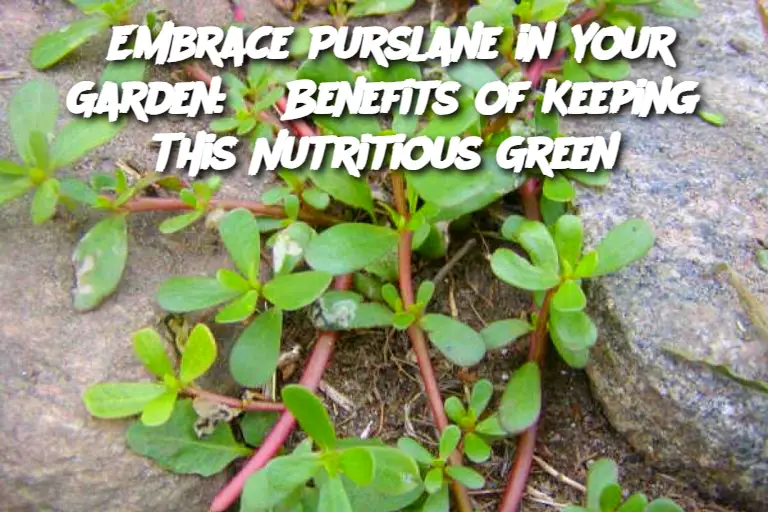ADVERTISEMENT
Purslane Pesto: For a twist on traditional pesto, blend fresh purslane leaves with garlic, pine nuts, Parmesan cheese, and olive oil. The result is a tangy, nutrient-packed pesto perfect for pasta, bread, or as a topping for grilled meats.
Purslane Smoothie: Blend purslane with your favorite fruits, such as bananas, berries, and mango, along with some yogurt or almond milk for a refreshing, green smoothie.
Purslane Salad: Toss fresh purslane with tomatoes, cucumbers, red onions, and a simple olive oil and vinegar dressing for a healthy, vibrant salad.
Frequently Asked Questions:
Is purslane edible? Yes! Purslane is not only edible but also highly nutritious. It's rich in omega-3 fatty acids, vitamins A and C, and antioxidants.
Can I eat purslane raw? Absolutely! You can enjoy purslane raw in salads, sandwiches, or as a garnish. The flavor is slightly tangy and crunchy, making it a great addition to fresh dishes.
How do I grow purslane in my garden? Purslane is a hardy, low-maintenance plant. It thrives in well-drained soil and full sun. Simply scatter the seeds in your garden and water them lightly. Purslane grows quickly and can be harvested in a few weeks.
Is purslane good for my health? Yes! Purslane is packed with nutrients, including heart-healthy omega-3s and a variety of vitamins. It’s also known for its anti-inflammatory and antioxidant properties.
Can I use purslane as a ground cover? Definitely! Purslane can be used as a ground cover due to its low-growing nature. It can help suppress weeds and add green coverage to your garden.
By embracing purslane in your garden, you'll not only enhance your landscape but also gain access to a nutritious, versatile plant that can be used in a variety of culinary creations. So, next time you see this green growing in your yard, consider keeping it around!
ADVERTISEMENT
